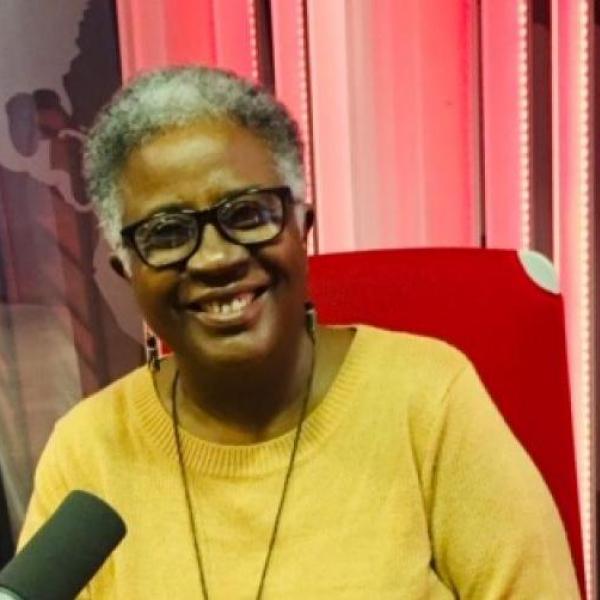The Intersection of Haitian Storytelling, Literacy, and SEL
Krick, Krack! The welcomed introduction to the start of folklore storytelling within the Haitian culture invites theatrical sessions filled with lessons, history, customs, and beliefs.
In honor of Haitian Independence Day on January, 1st, we want to focus on this time-honored tradition of Haitian storytelling. In Haiti, storytelling has long been central to fostering communication and teaching. With each storyteller passing down tales of folklore from one generation to the next, “the storyteller and his/her audience journey through their past, present, and future together [...experience] agony, strife, death, and victory throughout this collective journey in time” (Plaisir 272). The very act highlights the “importance of memory in Haitian culture” (Plaisir 272) as every storyteller is entrusted with a message from a distant time and with sharing information about the ancient times, customs, beliefs, history and heroic deeds of the Haitian people (Plaisir 269).
Professor Evelyne Trouillot, widely known for her work in fiction writing in Haiti, explains how as a child, storytelling was embedded in her daily life in Haiti and was the primary means of passing down Haiti’s rich culture. But now, in the hecticness of modern day life, she sees this sacred act falling by the wayside, losing its footing in today’s culture. Trouillot believes that while it will not be easy to maintain, Haitians must strive to keep storytelling alive. In fact, she notes that teachers can even leverage storytelling in the classroom to improve student literacy. Indeed, Dr. Anasthasie Liberiste-Osirus from the Global Center for the Development of the Whole Child (GC-DWC) and an expert in literacy education, argues that storytelling provides an excellent platform for students to expand their vocabulary and learn to be more descriptive. By storytelling’s very nature, “storytellers are allowed to embellish their tales with elaborate details, gestures, facial expressions, rhythmic expressions, onomatopoeia, formulaic speech, and various kinds of voices inflections or intonation. They must, however, stay faithful to the plot, sequence of events, and characters’ roles in a story” (Plaisir 271). These are crucial academic skills for literacy development as well.
Professor Trouillot also reminds us that we now live in a generation where schools are not solely about academic learning but are also about incorporating strategies that nurture and support each child. “A long time ago, it was not a question of the emotions of children. Children are supposed to go to school to learn, and that’s it. But now, you have this aspect of social and emotional well-being, so it’s new,” Trouillot shares during an interview with the GC-DWC. “I don’t think all schools are aware of it, and I don’t think all teachers are ready to do it. They have to be trained. But I think there is a new trend to pay attention to the child’s whole well-being.” Plaisir (2010) shares that reading and literacy can also be used to teach SEL, a skill that storytelling in Haiti has been doing for generations: “Haitians use folklore mainly to entertain one another, on the one hand, and to instill values in children, on the other. Storytelling activities are not only common forms of entertainment, but adults and children use such events as opportunities for both fostering understanding and teaching” (269).
Professor Trouillot has been at the forefront of integrating Social and Emotional Learning (SEL) into literacy in Haiti and recognizes the opportunity books have to offer students a roadmap for how to develop these skills.
Trouillot believes that books can play an important role in integrating SEL in the Haitian classroom, but they have to be relevant to Haitian students’ realities. SEL, while somewhat present in Haitian culture, is rarely defined and hard to articulate with words. “If you can find books that can relate to Haitian realities, the children will understand [SEL],” she explains. “But when you try and evoke a reality that is so far from them, they cannot relate.” This assessment prompted Trouillot, in collaboration with the University of Notre Dame’s Alliance for Catholic Education (ACE) Haiti, to develop a series of children’s books, specifically for the Haitian context, to teach SEL and continue in the tradition of storytelling by using the books as a platform to pass down and emphasize rich components of the Haitian culture.
Using a Haitian SEL framework, developed by ACE Haiti and a taskforce of Haitian scholars, including Trouillot, Trouillot in collaboration with other authors worked to bring to life the characters Ana and Tiga, a sister and brother pair, who tackle many of the same challenges that today’s Haitian students face on a daily basis. The duo model SEL skills outlined in the framework such as self-regulation, self-control, and collaboration and provide realistic examples of what these skills look like in a Haitian student’s life. Integrating these lessons into the stories was not always easy for Trouillot and the other authors, but she enjoyed the challenge of harnessing her creativity to tell a story while also following the guidelines set by the taskforce to impart valuable lessons to her readers.
One element of Haitian culture that was important to Trouillot and other authors to include throughout the series was Haitians’ loyalty to and affection for family. “We have our problems, but family remains the most important part of society,” Trouillot explains. “When you have a problem in Haiti, family has your back, so it was important for me to show that.” Consequently, love of family is palpable throughout the pages of the seven book series of Ana and Tiga.
Plaisir, J. (2010). Haitian Children’s Education: Orality, Literacy, and Technology. In Spears. A. & Joseph C. (Eds.), The Haitian Creole Language: History, Structure, Use, and Education (pp. 265-283). Lexington Books.

